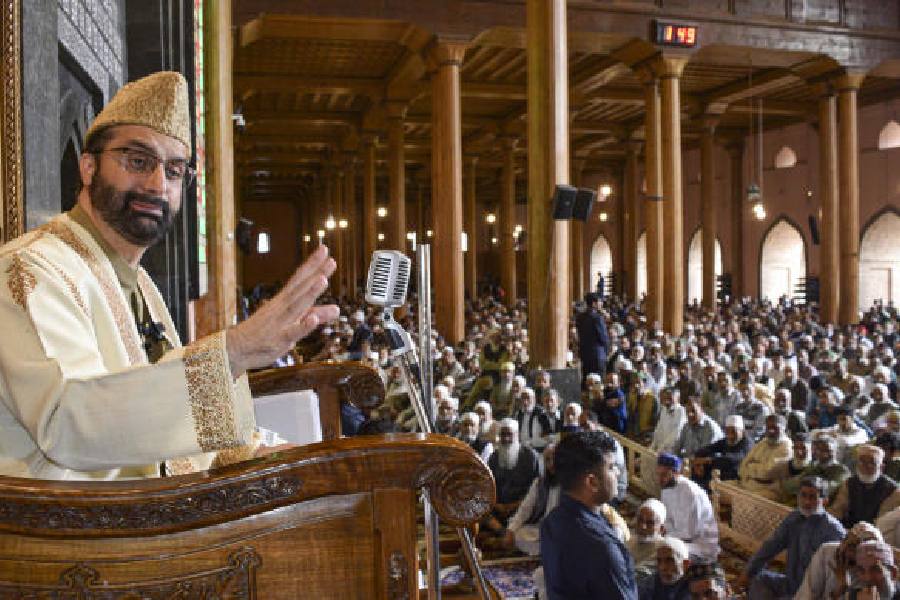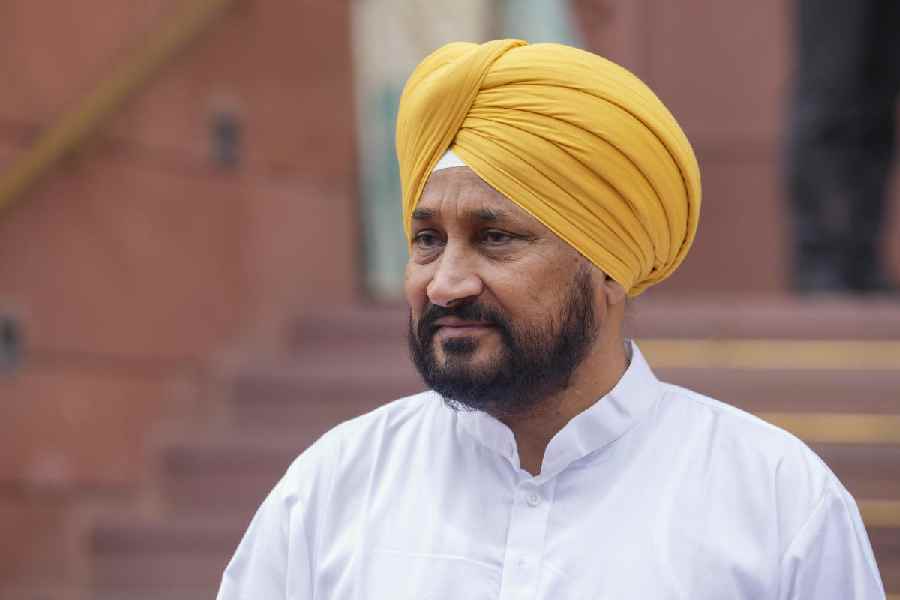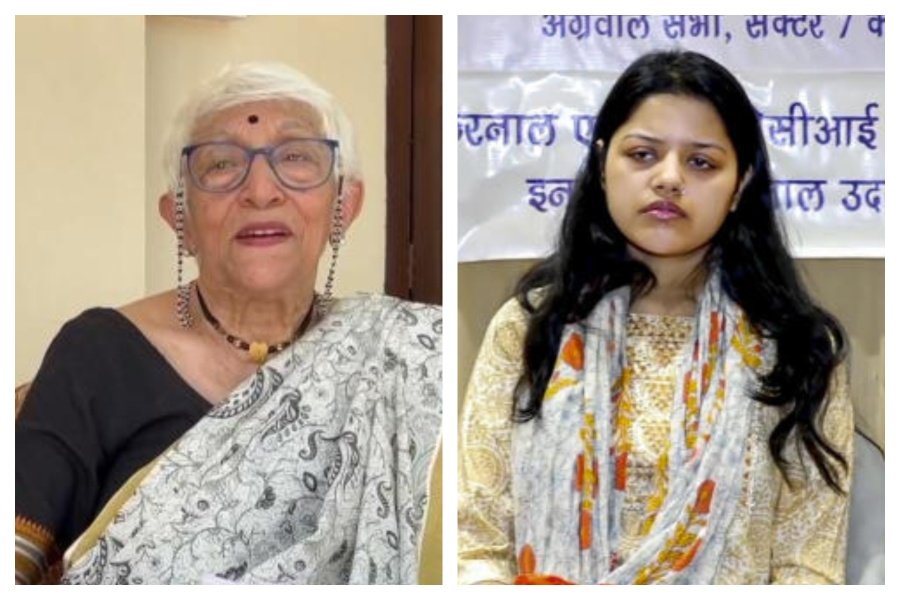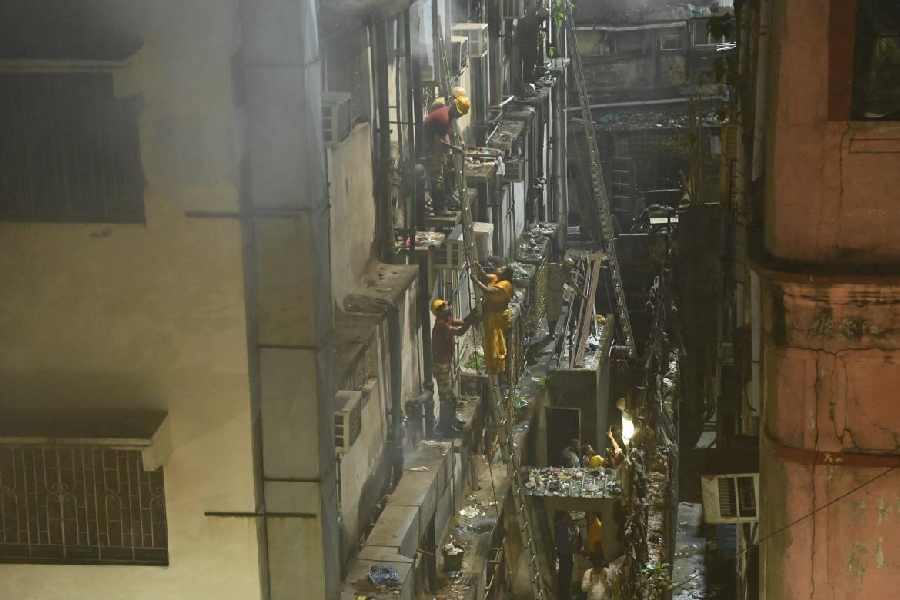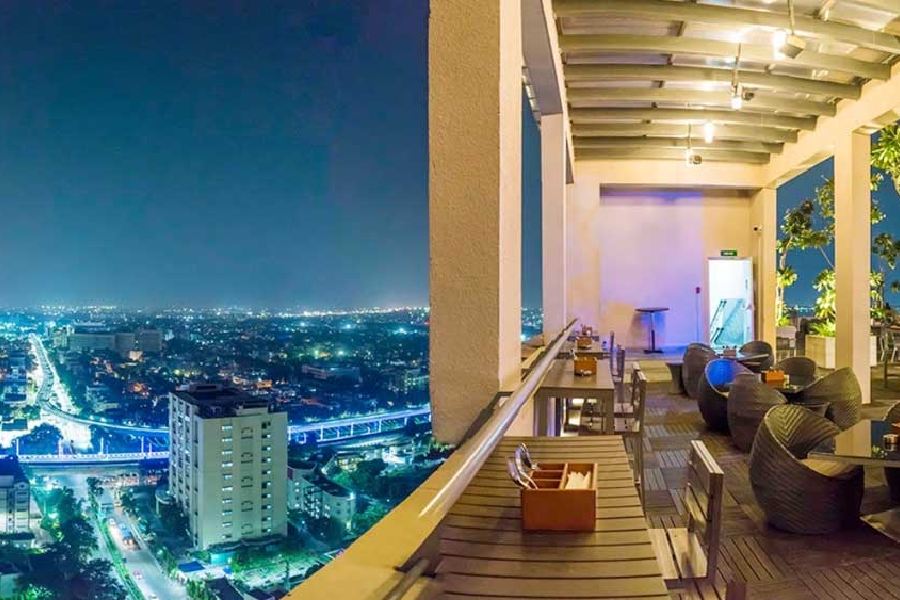 |
| A part of the Eden Gardens appears match-fit while another section wears a work-in-progress look on the eve of the final physical inspection by an International Cricket Council team before the World Cup. Picture by Bishwarup Dutta |
Eden Gardens’s World Cup makeover has entered the slog overs with everything from floodlights to furniture in the final stages of overhaul ahead of a pitch inspection by the International Cricket Council on Thursday.
The 17-year-old floodlights, the first to be installed in a cricket ground in the subcontinent, are being finally replaced with more powerful — and yet power-efficient — lamps designed to generate luminance suitable for high-definition television coverage of matches.
“We decided to go in for a complete overhaul after learning about an improved Philips variant of bulbs now available abroad. The old lights have been taken off and the new ones (worth Rs 4 crore) will be installed over the next few weeks,” Biswarup Dey, the joint secretary of the Cricket Association of Bengal (CAB), told Metro.
Officials said the new, improved Eden would be match-fit latest by January 15, a fortnight beyond the December 31 deadline and with just over a month to go for the first Cup tie at the ground on February 27.
Come the Cup, every other cricketer’s favourite turf will look brighter but not necessarily livelier. The lung power of a lakh could be missed the most as the Eden Gardens has shrunk from an 89,000-capacity stadium that would hold more to a 60,000-capacity one. The trade-off is comfortable seats in place of the knee-scraping concrete galleries.
 |
| One of the light towers waiting for new bulbs. (Bishwarup Dutta) |
Apart from replacing the galleries and redoing the toilets, the CAB is overhauling the players’ rooms — from the layout and the furniture to illumination and air-conditioning.
Another addition to the stadium is a row of 34 air-conditioned corporate boxes that seat 20 people each. The boxes have a television and a refrigerator each, along with the option of watching the match from an adjoining balcony.
“These boxes are tucked between the lower and upper tiers and are designed to give both an indoor and outdoor feel to patrons. The 16 boxes closest to the Club House can be booked for Rs 70 lakh each and the 18 boxes on the sides for Rs 60 lakh each for a period of 10 years,” said joint secretary Dey.
For die-hard Eden fans, what would matter the most, however, is that the Cup matches are held without a hitch.
The floodlights had gone from being Eden’s pride to Eden’s shame when two successive matches of the inaugural edition of the Indian Premier League in 2008 were disrupted by a blackout.
A third blip occurred on December 24, 2009, during the one-day match between India and Sri Lanka. The loss of face — the ground was in darkness for 26 minutes just after Ashish Nehra had sent down the second ball of the final over before the innings break — triggered the switch to generators as the primary source of power for subsequent matches.
Sadhan Mukherjee, the CAB expert on tower lighting, said the switch from alternative to direct current had since ensured that the metal halide lamps didn’t blink on account of a power fluctuation.
“The new lights are much more powerful than the older 220 volt-range single-ended filament 2kw metal halide lamps. They are all 400-volt double-ended filament 2kw metal halide lamps, designed to provide illumination of 2,500 lux (vertical) on the pitch, 2,000 lux in the 30-yard-circle and 1,500 lux across the outfield,” Mukherjee added.
The old lights at the Eden Gardens were capable of generating a maximum of 1,200 lux at the centre of the ground, against the ICC standard of 2,000 lux on the pitch, 1,750 lux in the inner circle and 1,500 lux across the outfield.
“In November 1993, when the old lights were first used, the level of illumination on the pitch was 1,600 lux. But the power declined to 1,200 lux over the years,” Mukherjee revealed.
Eden Gardens’s first match under lights — a Hero Cup encounter against South Africa in 1993-94 — is, of course, fondly remembered by fans for that thrilling last over bowled by Sachin Tendulkar with only six runs to defend. Sachin, ever the match-winner, bowled India to victory.
According to experts, a vertical luminance of 800 lux was good enough for a cricket match in the ’90s but the advent of HDTV and a six-fold increase in the number of cameras used for live telecast necessitated double the old illumination requirement.
The ICC’s illumination rules took effect this year.
Consultant Mukherjee said the number of bulbs in the four Eden towers was down by 38 per cent — from 864 to 536 bulbs — despite the increase in illumination capacity. “We are going to save 700kw of power that way,” he added.


